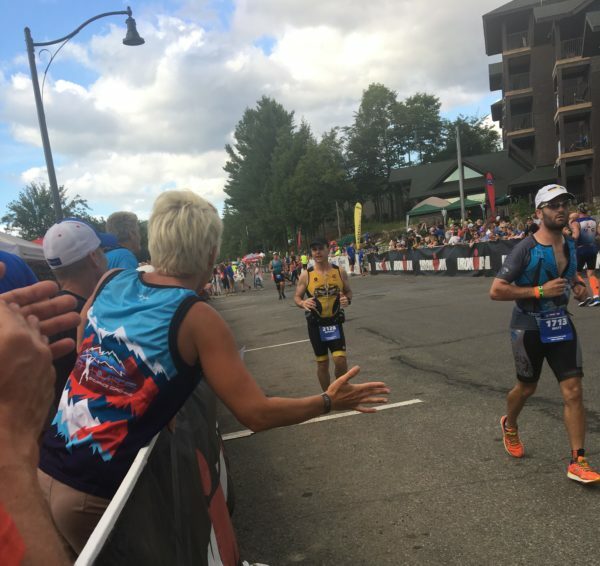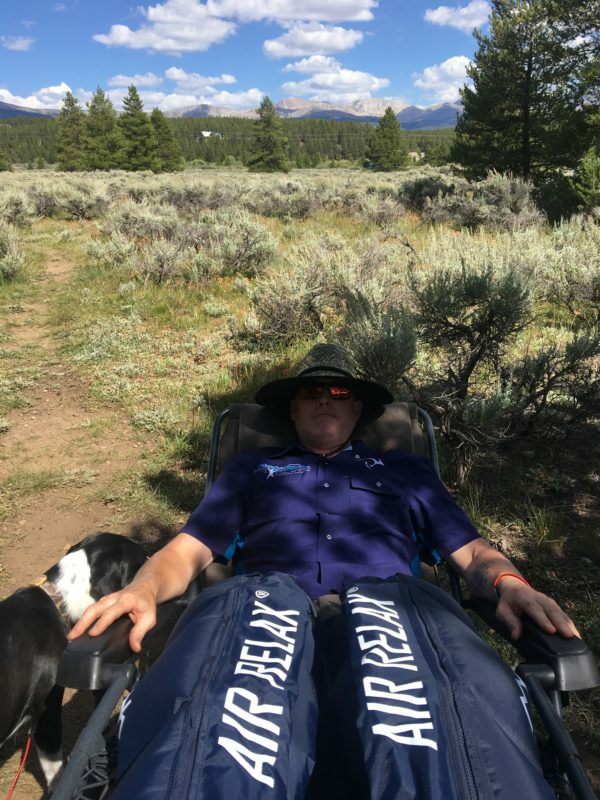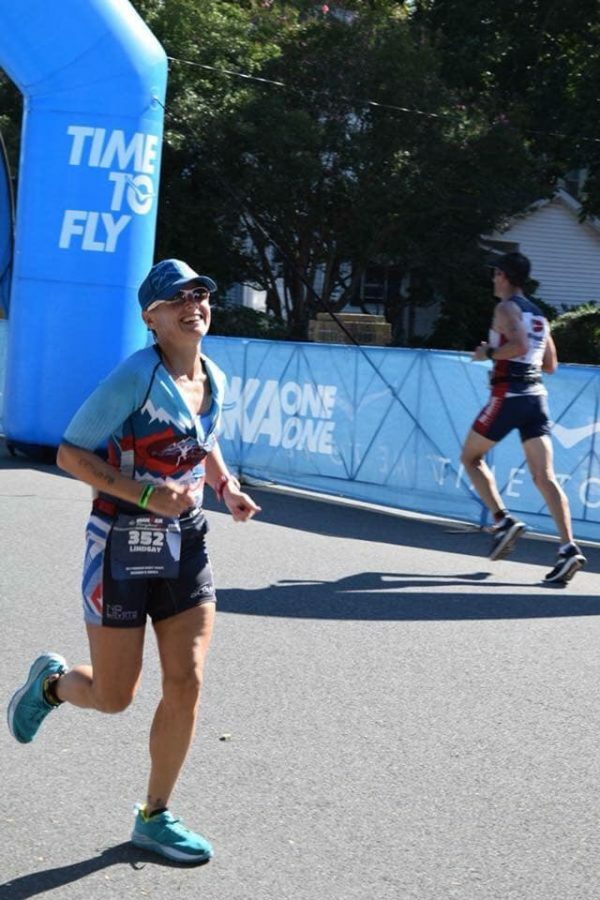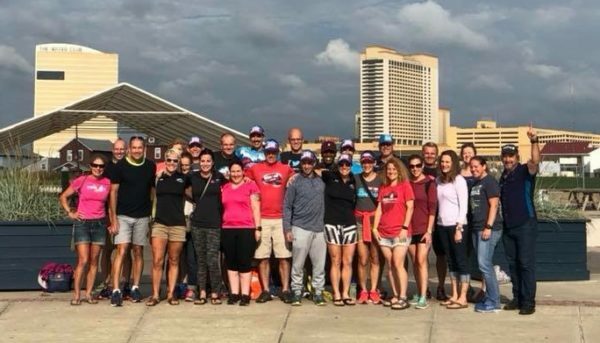
Training for and racing an ironman (140.6 or 70.3) is a huge undertaking. That’s an understatement, right? (See related: Are you ready to go the distance?)
Race day should be the icing on the cake after all the long hours of training, but it’s a long day out there and anything can happen.
You must be prepared for the unexpected!
Our 10 tips for Ironman racing will help you do just that. I developed these rules from a combination of my coaching experience as well as from my own racing experience – I’ve done 11 Ironman races, including 2 Ironman World Championships in Hawaii. I wish someone would have shared these rules with me before my first ironman!
Get to the start line rested
This one seems so simple, but it’s often overlooked.
Remind yourself that you’ve done the work, and that you are already prepared for race day challenges. You can’t gain any fitness in the last week–but you can hurt your freshness. It’s better to be a little undertrained than overtrained in the last few weeks leading up to your A race. (See related: How to be A race ready).
Many athletes start doubting their training and fitness during the taper and attempt to do some last minute workouts to gain fitness before the race. Don’t be “that” athlete. Workouts should keep you sharp – but not produce substantial fatigue. (see related: Taper tips.)

Avoid walking around the expo or exploring town too much. It’s tempting when you’re in a great destination to want to explore. Rather than steal your race-day freshness, schedule some vacation time after the race for your sightseeing. And remember: the expo is open after the race.
Lastly, don’t worry too much about how you sleep the night before – no one sleeps well the night before a big race. It is more important to get a good night of sleep two nights before the race.
Mentally prepare
Ironman racing is HARD, and that’s why you’re doing it – for the challenge. Your physical and mental toughness will be tested on race day. (see related: Mental Strength Series)
Write down a list of the reasons why you’re doing the ironman – you’ll need these reasons to draw on during the race. You’re more likely to give up when things get tough if you don’t know why you’re doing it. It doesn’t matter the reasons, but they should be heartfelt and important to you.
You’ll be nervous before the start, and that’s a good thing – this means you’re ready to go. Find a quiet spot to think before the gun goes off to review your reasons for doing the race, and think about key training days or races where everything clicked and came together.
Tell yourself, “I am ready and I will succeed.” You’ll need those positive thoughts to draw on during the race.
Keep your thoughts positive. When the negative thoughts come, acknowledge them, and then refute them with your positive affirmations. You may also need calories! Negative thoughts, apathy, or irritation are signs for needing calories – so eat! (See related: Our video series for fueling & hydration.)
Visualize key areas of your race daily in the weeks before your race. Include your perfect race, ending with a positive outcome, but also visualize anything you worry about going wrong and how you will handle it.
Once you’re familiar with the transition areas, mentally rehearse going through each one. (See related: Transition Tips.)
When done consistently and thoughtfully, this mental preparation will reduce pre-race anxiety because you’ve already gone through all the possible scenarios of things going wrong. It will eliminate surprises, such as flat tires, missing your special needs bag, dropping a water bottle, etc. You will know how you’ll handle each situation. This exercise can improve your chances of meeting your goals on race day.

Be grateful
Say a little affirmation of gratitude before the gun goes off for getting to the start line healthy and being able to do such an awesome event. This helps put everything into perspective and calm your nerves. As Mike Reilly says, “It’s just a long training day that’s catered with 2000 of your closest friends.”
Remember to thank the volunteers, which puts you in the right frame of mind if you’re suffering. And let them rub sunscreen on you. I had the worst burn of my life in Kona because I didn’t want to take the time in transition.
Enjoy your day! It’s your time to show off your hard work in training.
Sometimes racing isn’t fun which can lead to a downward spiral of negative thoughts that make matters worse. A simple way to break the cycle is to SMILE. It may be the last thing that you feel like doing, but just fake it! Put on a big smile, hold it for a while. Tension will drain out of your shoulders, you’ll rise up and feel lighter.
There’s a strong subconscious association between smiling, happiness and feeling good. It’s difficult to think and feel in a way contrary to your body language. Research has demonstrated that smiling alters blood flow in the brain and releases neuro-chemicals that produce a calming effect. And, it takes 43 muscles to frown and 17 to smile.
The best part: the crowd will LOVE you if you’re smiling. So, let other racers and the crowd lift you up with their positive energy. High five kids, kiss babies, etc. You can choose to be miserable or make it fun – if it’s not your best race, maybe you can talk more with competitors, or help someone else finish.
Have A, B, and C goals
The majority of your races aren’t going to be perfect, so it’s important to be able to shift your race goals on the fly and have back up goals. Placing can always vary depending on who shows up, so goals should be those that you have some level of control over, such as time goals (although these can vary depending on weather conditions, mechanical probs, etc.). And if you realize you’re not going to get a PR or place in your AG as you hoped, set goals such as finishing or maintaining form as you get tired. Process goals like this can help you maintain your focus and sometimes get you back in the race.
- A goal = qualify for Kona
- B goal = top 5 in AG
- C goal = go under 11 hours
- D goal = finish
Stick to your pacing plan

Stick to your own racing plan. Set clear, and realistic goals, and then create race guidelines that will help you execute a race that is in line with your ability and goals.
For example, seed yourself correctly in the swim corrals at the start. Start the swim in control. The swim start can be crazy with so many people, and your adrenaline is pumping so it’s easy to go out too fast, but aim for a pace that feels moderate and steady. You should feel like you’re cruising along relaxed with a smooth stroke once you find your rhythm and pace. Try to stay aerobic, draft well, and maintain your stroke mechanics. Enjoy the swim, it’s the shortest part of your day! (See related: How to survive your first triathlon swim.)
Stay in your target heart rate and power zones, especially on the bike. Ironman is not about riding fast (in most cases); it’s about riding as fast as you can while still being able to run a marathon. Probably the #1 mistake of Ironman athletes is going too hard the first 90 min of the bike – you feel better than you have in months because you’re rested, energized, strong and excited.
How many times have you heard – “If only I didn’t fall apart on the run!” 90% of those situations could have been avoided by riding smart. You’ll probably feel really good when you start the bike and be tempted to hammer. Resist the temptation to keep up with the other cyclist blowing by you – you’ll pass them back later.
The second time I raced Ironman Lake Placid I took the first loop out way too fast, and really paid for it on the second loop, getting passed by everyone and then having a slow marathon. The first 30 miles settle into a comfortable cycling rhythm and start replenishing energy with food and drink. The pace should feel easy, and you will let your system settle and take in the nutrition you lost on the swim. Miles 31-60, stay on your nutrition and hydration, and keep your pace steady. Miles 61-90 you can start working a little harder. Mile 80 on the bike separates those that went out too fast from those who paced smart – fatigue starts setting in, legs get heavy. If you haven’t paid attention to nutrition, you start feeling it now. Visualize this part of the race so you can better deal with it. And remember, it’s not who goes the fastest, it’s who slows down the least. Miles 91-112 maintain momentum and focus (easy to daydream at this point) and continue eating (but back off solid foods) so you can set up your run.
Don’t get off the bike and think, “How am I going to run a marathon?” Just tell yourself, “It’s time to run 1 mile.” And then run aid station to aid station, and break up marathon into 10k splits or smaller segments, which can improve your level of focus. But hopefully you do feel good at the start of the run, and if so, avoid taking it out too hard in the first 13 miles.
The second half of the marathon is where the race begins and it can make or break your race. It’ll be hard to keep your pace, pick it up if you can, and give the last 10k all that you got – you’ll be on autopilot, putting one foot in front of the other. Just keep moving forward, and just push thru the pain. Look back and know you gave 100% of yourself; have no regrets!
After winning IMNZ in 2002, Cam Brown was quoted as describing the marathon, “20 miles of hope and 6 miles of reality.”

Think Easy, Light, Smooth, and Fast. You start with easy, because if that’s all you get, that’s not so bad. Then work on light. Make it effortless, like you don’t care how high the hill is or how far you’ve got to go. When you’ve practiced that so long that you forget you’re practicing, you work on making it smooth. You won’t have to worry about the last one – you get those three, and you’ll be fast.
Stay in the present
Stay focused on the here and now and don’t let your mind wander. Keeping your focus on things like perceived effort, heart rate, cadence, and how you’re feeling helps you remember to eat or drink, keep your form, and the execution of your race plan. Get in a rhythm.
Relaxed focus is best where there is little daydreaming and little thought. But negative thoughts may creep in during rough patches, so at these times, positive thoughts are better than negative thoughts. Find a trigger you can use to crush any negative thoughts that enter your mind – a song you sing, or have mantras ready to say,
- “I can do it, I can do it…”
- “Stay strong”
- “Smooth and fast”
It doesn’t matter what the mantra is, as long as it helps you keep your focus.
If the mantras aren’t working, you can try counting, tuning outward, focusing on the beautiful scenery, pretend the trees are cheering for you, etc.
Never give up
Iron distance racing is hard. This is why you’re doing it – for the challenge. Remember, it’s normal to feel bad at some points during the race. You’ll have rough patches. When that happens, review what you might need: calories, hydration, slow down a bit. Usually, if you eat and drink, reduce your effort – you’ll feel better within 15-20 minutes.
When that little voice tells you to give up, override it and persevere to the end, knowing that’ll it’ll all be over soon. Remind yourself that everyone else feels bad too – don’t have the perception that everyone else feels great. Stay mentally tough and drive yourself as hard as you can until you cross that finish line. Your race is never over until you say it is. Finish at all costs, you’ll thank yourself later.
Stick to your nutrition plan

This includes pre-race – stick to what you’ve eaten the day before long training weekends, and breakfast Nothing new! And don’t overeat.
Stay hydrated…if you are peeing more than once per hour, back off water and switch to sports drink. But if you aren’t peeing at all, increase hydration!
Keep track of the calories you put down and listen to your body – GI stress such as belching, nausea, vomiting, bloating, stomach aches, etc. may be caused by dehydration, so be sure to be drinking enough. Cooler beverages have been shown to empty from the stomach at a faster rate, and they can be more appealing.
Make sure you’re not taking in too many calories relative to the amount of plain water you consume – gastric emptying slows once the fluids in your gut have a greater than 10% carb content. My first ironman I ate a few powerbars on the bike along with some gels and sports drink, and needed the port-a-john every other mile on the run! And make sure you consume plain water with any gels or bars. Remember to just slow down if you have GI distress and hopefully it’ll improve in 10-15 min of lower intensity racing.
Depending on your effort level for the day, you don’t need to take in any fat or protein. This may be different for the 12hr + athlete. Stick to carbs.
Eat when your heart rate dips, drink when it rises.
Try coke in the later miles of the marathon if you are having problems with bloating and you are peeing.
Try salt if you’re eating and drinking, and you’re still feeling tired, or if you feel bloated and are not peeing, take salt and water only.
Don’t rely on special needs bag
In my first ironman, my bag was not in the row of numbers it was supposed to be in – they can get mixed up or you can have a bad handoff, so don’t count on it being there, have a back up plan. Be prepared to use aid stations for any extra needs.
Carry everything you need and be prepared for bad weather and maybe pack extra clothing (arm warmers, leggings, gloves, socks), sunscreen, etc. in your transition as well as your special needs. Put bright ribbon on special needs and transition bags so they’re easy to spot and grab.
Smile across finish line

You’ll probably buy your finisher photo, so SMILE! Back to gratitude…no matter how your race went, be grateful of things that went well, and to be healthy enough to compete in such an awesome event.
Thank your support team – triathlon is an individual sport, but not really. You’ve probably had a lot of love and support through all your training and racing leading up to this, so make sure to say thank you to your spouse, parents, training buds, and spend some extra time with them in the offseason.
Think about your race. Analyze what went right and what went wrong. Write a play by play story so you can review it and use it for future reference. Don’t beat yourself up if you had a bad race – everyone has bad races and the more you do, the more likely you’ll have a bad race. (See related: How to do a proper post-race analysis.)
We like to say that “luck” is where preparation meets opportunity. You’ve prepared yourself, and race day is the opportunity. We hope these tips for Ironman racing will help you make your own luck on race day!
If you have questions, please feel free to contact us!

